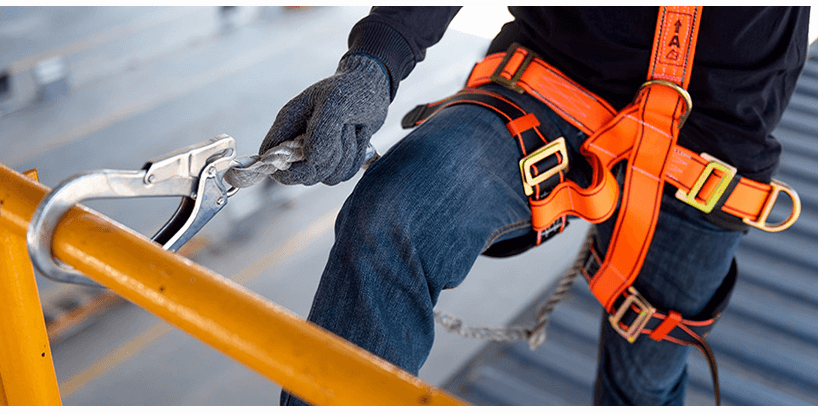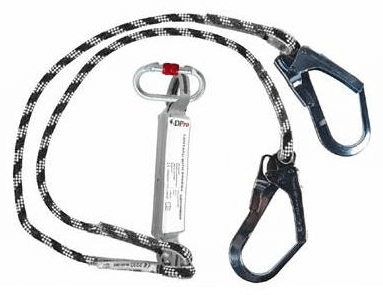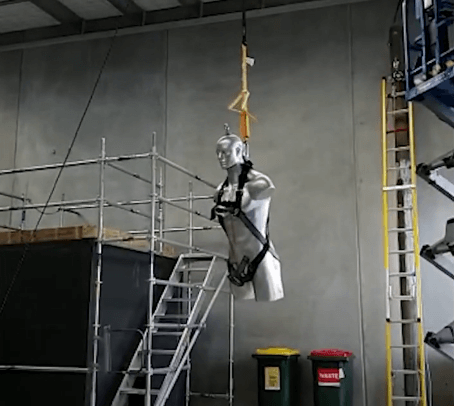Lanyards
Lanyards
The Use of Lanyards in Construction Scaffolding Systems
1. Introduction
Working at heights in the construction industry is one of the most common areas where workplace accidents and fatalities occur. Personal protective equipment (PPE) is used to ensure the safety of workers, particularly those working on scaffolding systems. One of the most critical components of these systems is the lanyard (fall arrest safety harness connection rope). This article examines international and Turkish standards related to lanyard use, along with technical details and practical examples.

2. What is a Lanyard and How Does It Work?
A lanyard is a connecting device designed to prevent falls, with one end attached to the worker’s safety harness and the other to a fixed anchor point. There are two main types of lanyards:
Static (Fixed-Length) Lanyard
Shock-Absorbing Lanyard
Shock-absorbing lanyards mitigate kinetic energy generated during a fall, preventing injury to the body.
Example of a Lanyard (According to EN 354 Standard)

3. International Standards (OSHA, ANSI, EN)
3.1. OSHA (Occupational Safety and Health Administration - USA)
OSHA sets the standards for occupational safety and health in the U.S. The OSHA 1926.502 standard regulates the use of fall protection equipment. According to this standard:
Lanyard length must be adjusted to limit fall distance.
Shock-absorbing lanyards are mandatory (for fall risks exceeding 6 feet).
Anchor points must withstand at least 5,000 lbs (2,268 kg) per worker.
3.2. ANSI/ASSP Z359 (American National Standards Institute)
The ANSI Z359 series provides comprehensive standards for fall protection equipment:
ANSI Z359.11-2021: Defines performance criteria for shock-absorbing lanyards.
ANSI Z359.12-2019: Covers testing methods for connecting components and anchor systems.
3.3. EN (European Norm) Standards
The following standards apply to lanyards in the European Union:
EN 354:2010: Specifies technical requirements for lanyards.
EN 355:2002: Covers performance testing for shock-absorbing lanyards.
EN 363:2018: Defines general requirements for personal fall protection systems.
Shock-Absorbing Lanyard Test (According to EN 355 Standard)

4. Turkish Standards (SGK, TSE, OHS Regulations)
In Turkey, lanyard usage is regulated by the Occupational Health and Safety Law (No. 6331) and related regulations.
4.1. TSE (Turkish Standards Institution)
TS EN 354: Specifies technical conditions for lanyards.
TS EN 355: Defines performance criteria for shock-absorbing lanyards.
TS EN 363: Covers general rules for fall arrest systems.
4.2. Ministry of Labor and Social Security (OHS Regulations)
According to the Regulation on Working at Heights (2019):
Lanyards must be inspected before each use.
Anchor points must withstand at least 12 kN (1,200 kg).
Shock-absorbing lanyards are mandatory (for fall risks exceeding 2 meters).
5. Key Considerations for Lanyard Use
Proper Connection: The lanyard must be correctly attached to the anchor point (e.g., dorsal D-ring).
Shock-Absorbing Feature: Models that absorb fall energy should be preferred.
Periodic Inspection: Check for wear, tears, and deformations before each use.
Suitable Anchor Point: The anchor point must be positioned to limit fall distance.
6. Conclusion and Recommendations
The use of lanyards in scaffolding systems is vital for worker safety. International standards (OSHA, ANSI, EN) and Turkish regulations (TSE, OHS) define the technical specifications and usage conditions of lanyards in detail. Employers must provide compliant equipment and train workers on proper usage.
Recommendations:
Mandate the use of shock-absorbing lanyards.
Conduct regular training to raise worker awareness.
Prefer products compliant with TS EN 354 and EN 355 standards.
Our Products
Corporate
Products
© Copyrights Reserved 2025